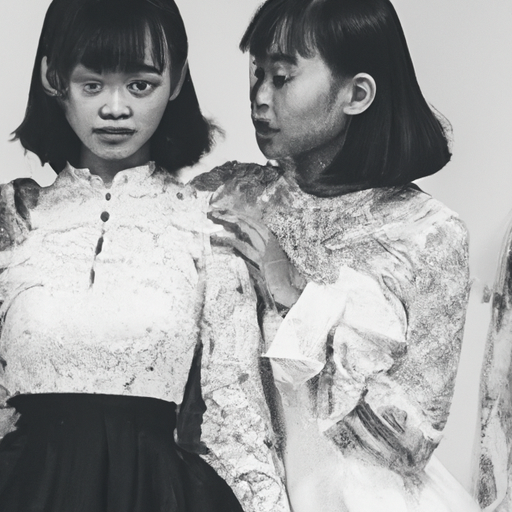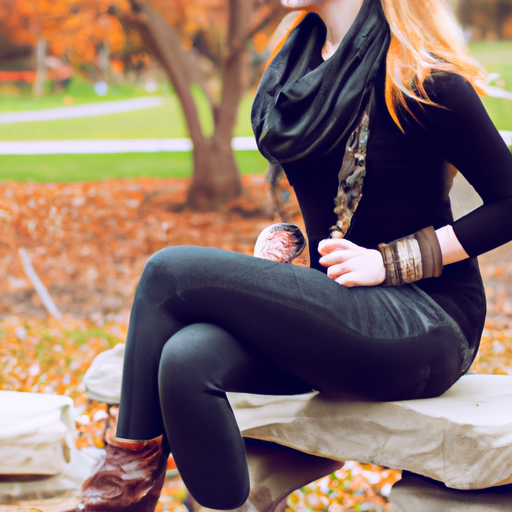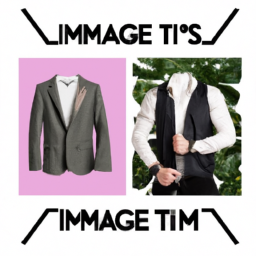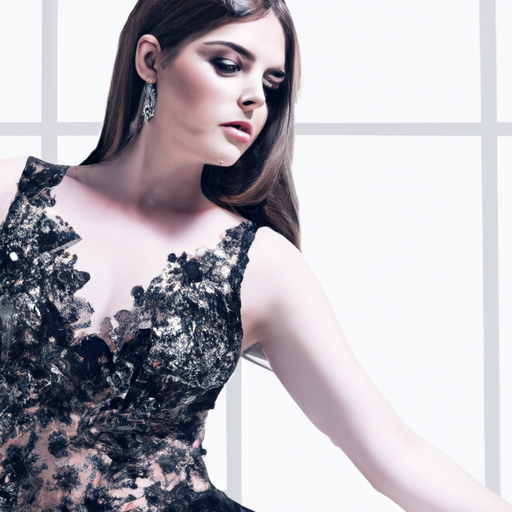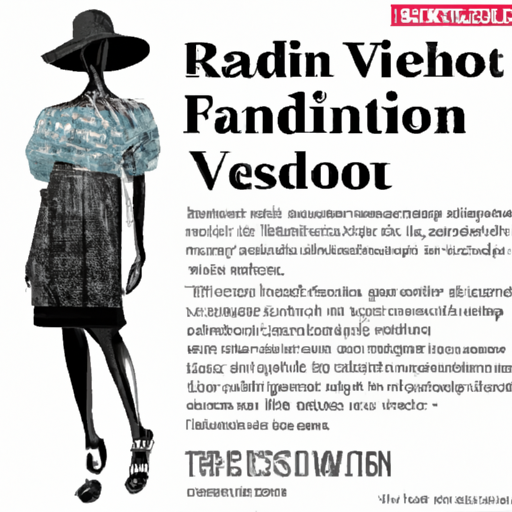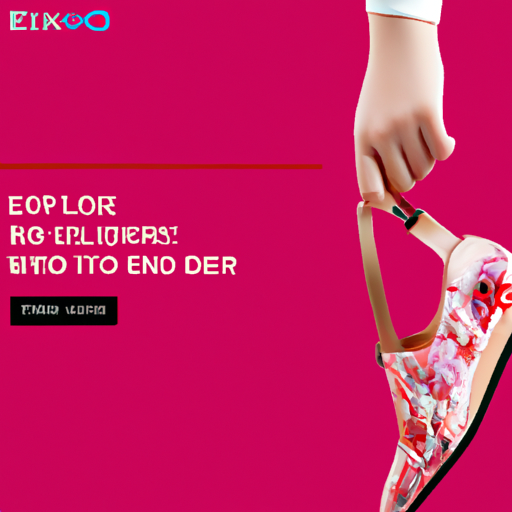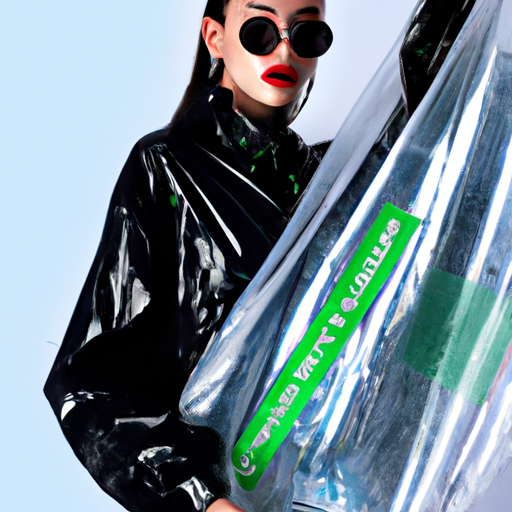How Do Fashion Trends Start?
Ever wondered how fashion trends come into existence? It’s a fascinating concept, isn’t it? From the runway to the racks, trends have the power to influence our style choices and dictate what’s considered “in” or “out” in the fashion world. But have you ever wondered how these trends actually start? How do certain styles, colors, and designs become the talk of the town while others fade into obscurity? Grab a seat, because we’re about to take a closer look at the mysterious origins of fashion trends and uncover the secrets behind their creation.
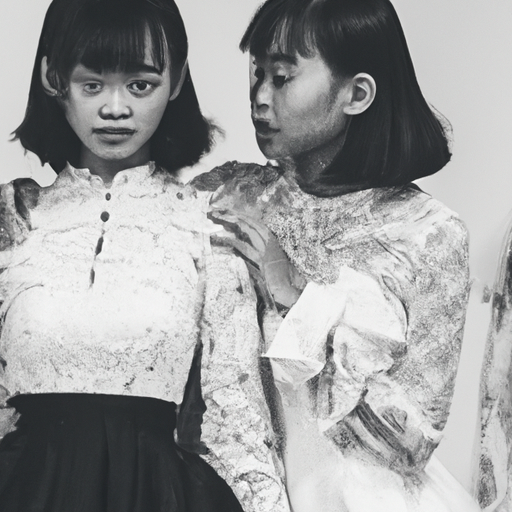
Table of Contents
The Role of Designers
Designer’s Vision
Designers play a critical role in starting and shaping fashion trends. They are the visionaries who create innovative designs and set the direction for new styles. With their creativity and expertise, designers anticipate and envision the trends that will capture the attention of the public. Through their sketches, fabric selections, and construction techniques, they bring their vision to life, inspiring others in the industry and influencing the way people dress.
Runway Shows
One of the key avenues for designers to showcase their latest creations is through runway shows. These events are highly anticipated and attended by industry insiders, celebrities, and fashion enthusiasts. Runway shows allow designers to present their collections in a theatrical and captivating manner, giving the audience a glimpse into their creative world. The designs showcased on the runway often set the tone for upcoming fashion trends, as they showcase the designer’s vision and provide inspiration for other creators. Through the combination of music, lighting, and choreography, runway shows create an immersive experience that brings the designer’s vision to life.
Fashion Weeks
Fashion weeks, held in major fashion capitals around the world, are important events that influence the fashion industry. These week-long events bring together designers, buyers, editors, and influencers, providing a platform for designers to showcase their latest collections. Fashion weeks not only highlight the works of established designers but also offer opportunities for emerging talents to gain recognition. The buzz and media coverage surrounding fashion weeks generate immense attention and shape the trends for the coming seasons. The fashion shows, presentations, and events held during fashion weeks set the stage for what will be deemed fashionable and on-trend.
Celebrity Influence
Celebrities have a strong influence on fashion trends. Their high visibility and influence over popular culture make them powerful fashion influencers. When celebrities are photographed or seen wearing specific brands or styles, it often sparks a widespread desire to emulate their look. Celebrity collaborations with designers and the launch of celebrity fashion lines amplify their influence even further. By endorsing and wearing certain designs, celebrities impact consumer behavior and contribute to the creation of fashion trends. Their red carpet appearances and iconic fashion moments also serve as a source of inspiration for designers, who aim to create outfits that will be adored and emulated by fans.
The Influence of Media
Fashion Magazines
Fashion magazines have long been influential in shaping fashion trends. With their editorial spreads, interviews with designers, and coverage of fashion events, they provide a platform for showcasing the latest designs and trends. Fashion magazines have a wide readership and offer a curated selection of styles that serve as a guide for readers. Editors and stylists in these magazines have the power to shape trends by featuring certain designers, brands, or pieces in their publications. By influencing what readers see and how they perceive fashion, magazines have a significant impact on shaping fashion trends.
Blogs and Websites
The advent of the internet and the rise of fashion blogs and websites have democratized fashion and increased its accessibility. Bloggers and influencers, known for their unique sense of style and ability to connect with audiences, have become influential players in the fashion industry. Through their blogs, they share outfit inspiration, trend reports, and coverage of fashion events. Their personal style and authentic voice resonate with readers, who look to them for fashion guidance. Bloggers often collaborate with brands and designers, enhancing their influence and shaping trends through their endorsement and promotion of certain styles or products.
Social Media
Social media platforms have revolutionized the way people consume and engage with fashion. Instagram, for example, has become a hub for fashion inspiration, allowing users to follow influencers, brands, and designers. Through curated feeds, these fashion influencers share their outfits, fashion tips, and insights into the latest trends. The instant nature of social media enables trends to spread rapidly, with users sharing and emulating popular styles. Additionally, social media platforms provide a direct line of communication between consumers and brands, allowing for real-time feedback and interaction. Brands and designers leverage social media to launch new collections, engage with their audience, and gain insights into consumer preferences, further influencing fashion trends.
Street Style and Influencers
Street Style Photographers
Street style photography has become a prominent aspect of fashion culture. Photographers capture candid images of individuals on the streets, showcasing their unique personal style. Street style photography offers a glimpse into how fashion is translated and interpreted by individuals in everyday life. These images inspire and provide a source of inspiration for designers, as they capture the creativity, individuality, and diversity of fashion on the streets. Street style photographers often spot emerging trends before they hit the mainstream, making them an important part of the trend-setting process.
Fashion Bloggers
Fashion bloggers, known for their personal style and fashion expertise, have gained significant influence in the fashion industry. Their ability to connect with their audience and provide relatable fashion advice has made them trusted sources for style inspiration. Bloggers attend fashion events, collaborate with brands, and create content that showcases how to wear the latest trends. By sharing their unique interpretations of current designs, bloggers influence consumer behavior and contribute to the shaping of fashion trends. Their street style looks and outfit posts inspire followers, who seek to replicate their fashion-forward looks.
Influencer Marketing
Influencer marketing has become a powerful tool for shaping fashion trends. Brands collaborate with influencers to promote their products, leveraging their large following and influence. By partnering with influencers, brands can gain exposure to a broader audience and create a sense of desirability around their products. Influencers, in turn, have the opportunity to align themselves with reputable brands and increase their influence in the industry. Through sponsored collaborations, influencers shape trends by introducing their audience to new brands, styles, and products, driving consumer demand and influencing fashion choices.
Historical and Cultural Influences
Retro and Vintage Trends
Fashion trends often draw inspiration from the past, with retro and vintage styles frequently making a comeback. Designers reinterpret and modernize classic looks, incorporating nostalgic elements into their collections. The cyclical nature of fashion allows for the revival of previous trends, bringing them into the present and giving them a fresh twist. The popularity of retro and vintage trends reflects a desire for nostalgia and a celebration of fashion history, as these styles evoke a sense of timelessness and nostalgia.
Cultural Celebrations
Cultural celebrations and events have a significant influence on fashion trends. Festivals, such as Coachella and Burning Man, often set the stage for bohemian-inspired looks, with attendees showcasing their personal style and embracing free-spirited fashion. Similarly, cultural celebrations like Chinese New Year or Diwali influence fashion trends by incorporating traditional motifs, colors, and designs into contemporary pieces. These celebrations provide an opportunity for designers to explore different cultural aesthetics, resulting in unique and culturally-inspired fashion trends.
Subcultures
Subcultures and niche communities often play a pivotal role in shaping fashion trends. These groups embrace distinctive styles that challenge mainstream fashion norms. From punk to goth to hip-hop, subcultures have introduced fashion trends that eventually permeate through mainstream culture. Designers and brands take inspiration from subcultures, adopting their aesthetics and incorporating them into their collections. The influence of subcultures on fashion trends is a testament to the power of individuality and self-expression in shaping the fashion landscape.
Economic Factors
Luxury Brands
Luxury brands have a significant influence on fashion trends. Their high-end designs, craftsmanship, and exclusivity make them aspirational and desirable. Luxury brands often set the standards for quality, innovation, and style, shaping trends that trickle down to more affordable fashion segments. The designs showcased by luxury brands on the runway and in their advertising campaigns influence the direction of fashion, as they embody a level of sophistication and status. Consumers look to luxury brands for inspiration, and their choices drive consumer behavior and shape fashion trends.
Fast Fashion
Fast fashion has transformed the fashion industry, making trends accessible and affordable for a broader consumer base. Fast fashion brands quickly replicate the latest runway looks, creating affordable versions for the mass market. The fast-paced production and distribution model of these brands allow consumers to adopt new trends almost instantly. The affordability and availability of fast fashion contribute to the rapid turnover of trends and the constant evolution of fashion. However, the environmental and ethical implications of fast fashion have led to calls for a more sustainable and conscious approach to fashion consumption.
Consumer Behavior
Consumer behavior is a significant factor in shaping fashion trends. The choices and preferences of consumers drive demand for certain styles, designs, and brands. Brands closely monitor consumer behavior through market research, trend analysis, and sales data. Consumer feedback and purchasing patterns inform the decisions made by designers and brands, helping them understand which trends resonate with their target audience. As consumers seek self-expression and individuality through fashion, their preferences and behaviors influence the creation and adoption of fashion trends.
Technology and Innovation
Fabric Technology
Advancements in fabric technology have had a profound impact on fashion trends. From sustainable materials to smart textiles, innovative fabrics have expanded the possibilities for designers to create new and unique designs. Sustainable fabrics, such as recycled or organic materials, have gained prominence as consumers become more conscious of the environmental impact of fashion. Similarly, technological advancements have allowed for the integration of electronic components and functionalities into garments, creating cutting-edge designs that blend fashion and technology. Fabric technology enables designers to push boundaries and explore new horizons in fashion, defining trends that reflect the fusion of innovation and style.
Digital Platforms
Digital platforms have revolutionized the way fashion trends are disseminated and consumed. Online platforms, such as fashion websites, social media, and fashion apps, provide instant access to the latest trends, collections, and style inspiration. Fashion influencers and brands leverage these platforms to reach a global audience and showcase their designs. Digital platforms also facilitate the democratization of fashion, allowing emerging designers and independent brands to gain exposure and influence trends. The accessibility and reach of digital platforms have accelerated the pace of fashion trends, making them more dynamic and responsive to consumer demands.
Online Shopping
The rise of online shopping has had a profound impact on fashion trends. With the convenience and accessibility of e-commerce platforms, consumers have more options than ever before. Online shopping allows consumers to discover new brands, access a wide range of products, and have purchases delivered directly to their doorstep. It also provides a platform for emerging designers to reach a global audience, breaking down geographical barriers. The ability to browse and purchase fashion items online has accelerated the adoption of trends, as consumers can easily discover and acquire the latest styles from anywhere in the world.
Music and Entertainment
Music Videos
Music videos have long been influential in shaping fashion trends. The visual storytelling of music videos often incorporates fashion as a key element, showcasing unique and memorable outfits. Music artists, with their charismatic personas and a team of stylists, set the stage for emerging fashion trends. Iconic music videos, such as Madonna’s “Like a Virgin” or Michael Jackson’s “Thriller,” have left a lasting impact on fashion, inspiring generations to replicate their iconic looks. The fusion of music and fashion in music videos creates a powerful platform for artistic expression and trend-setting.
Film and TV
Film and television have a significant influence on fashion trends. Costume design plays a crucial role in bringing characters to life and creating memorable visual aesthetics. From Hollywood blockbusters to popular TV series, the characters’ wardrobes often captivate the audience and become iconic. Costume designers and stylists carefully curate outfits that reflect the personality, era, and storytelling of the characters. Viewers are inspired by these on-screen fashion moments and seek to incorporate similar styles into their own wardrobes. Through their influence on fashion in the media, films and TV shows shape trends and become a source of inspiration for designers and consumers alike.
Iconic Celebrity Moments
Iconic celebrity moments have the power to shape fashion trends. Memorable outfits worn by celebrities at red carpet events, award shows, or public appearances become defining moments in fashion history. Whether it’s a daring dress, a statement accessory, or a groundbreaking fashion choice, these moments capture the imagination of the public and inspire fashion trends. Historical examples include Marilyn Monroe’s white dress in “The Seven Year Itch” or Princess Diana’s wedding gown. Celebrity moments serve as a reference point for designers, influencers, and consumers, shaping the direction of fashion and influencing personal style choices.
Institutional Influence
Fashion Schools
Fashion schools play a significant role in shaping fashion trends by nurturing and training the next generation of designers. These institutions provide aspiring designers with the knowledge, skills, and exposure needed to succeed in the industry. Fashion schools encourage experimentation, critical thinking, and creativity, pushing the boundaries of fashion and inspiring new trends. Graduates from reputable fashion schools often go on to become influential designers, establishing their unique style and contributing to the ever-evolving fashion landscape.
Fashion Awards and Recognitions
Fashion awards and recognitions celebrate the creativity, craftsmanship, and innovation of designers. These prestigious events honor the achievements of fashion professionals, providing validation and exposure for their work. Winning or being nominated for fashion awards elevates a designer’s profile and influences the perception of their brand. The recognition bestowed upon designers through these awards can propel them to the forefront of fashion trends and industry-wide recognition.
Design Competitions
Design competitions offer emerging designers a platform to showcase their talent and gain exposure. These events often have a specific theme or challenge, encouraging designers to push their creative boundaries. The innovative designs that emerge from these competitions can shape fashion trends by challenging traditional norms and introducing new concepts. Winning or being recognized in a design competition not only brings attention to the designer but also signals to the industry that their work is influential and worthy of attention.
Globalization and Travel
Cultural Exchange
Globalization and travel have facilitated the exchange of culture, ideas, and fashion trends on a global scale. As individuals travel to different countries and experience diverse cultures, they bring back influences that shape their personal style and fashion choices. Cultural exchanges inspire designers to incorporate unique elements from different regions into their collections, resulting in globally influenced trends. The fusion of cultural aesthetics and the celebration of diversity in fashion contribute to the globalized nature of trends.
Fashion Tourism
Fashion tourism, also known as “shopping tourism,” is a growing trend that influences the fashion industry. Travelers seek out destinations known for their fashion offerings, such as Paris, Milan, or Tokyo, to immerse themselves in the local fashion scene. Fashion capitals attract tourists with their luxury boutiques, designer flagship stores, and unique shopping experiences. Fashion tourism contributes to the economic growth of these cities while influencing trends by exposing visitors to local designers, brands, and fashion-forward styles. The intersection of travel and fashion creates a symbiotic relationship that shapes trends and supports the fashion industry.
International Influencers
The rise of international influencers has expanded the reach and influence of fashion trends. Influencers from different parts of the world provide unique perspectives and interpretations of fashion, exposing their followers to new styles and trends. By sharing their fashion insights and local fashion scenes, international influencers contribute to the global conversation on fashion. Their influence extends beyond their home countries, inspiring followers from different cultures and backgrounds to adopt and adapt international trends. International influencers play a key role in shaping the global fashion landscape and pushing trends to new territories.
Celebrity Collaborations
Celebrity Fashion Lines
Celebrity fashion lines are collaborations between celebrities and fashion brands or designers. These collaborations allow celebrities to bring their personal style and vision to the fashion industry. By lending their name and expertise, celebrities create their own fashion lines, which are often influenced by their individual fashion choices and personalities. Celebrity fashion lines have the potential to shape trends by reaching a wide audience and capitalizing on the star power of the celebrity involved. The designs and aesthetics of these lines reflect the celebrity’s personal brand, influencing consumer perceptions and fashion choices.
Collaborations with Designers
Collaborations between designers and celebrities have become increasingly prevalent in the fashion industry. These partnerships bring together the creative vision of designers and the influence of celebrities, resulting in highly anticipated and successful collections. Collaborations often create a buzz and generate media attention, shaping fashion trends by introducing new styles and merging the unique aesthetics of designers and celebrities. These partnerships allow designers to reach new audiences and infuse their designs with the star power and personal brand of the celebrity.
Brand Ambassadors
Celebrities often serve as brand ambassadors for fashion brands. By partnering with a brand, celebrities endorse and promote its products, reflecting their personal style and values. The choice of brand ambassador influences consumer perception of the brand and can shape trends by associating the brand with the celebrity’s image. Brand ambassadors often collaborate with the brand to create exclusive collections, further influencing fashion choices and consumer behavior. The visibility and influence of brand ambassadors extend beyond traditional advertising, making them powerful drivers of fashion trends.
